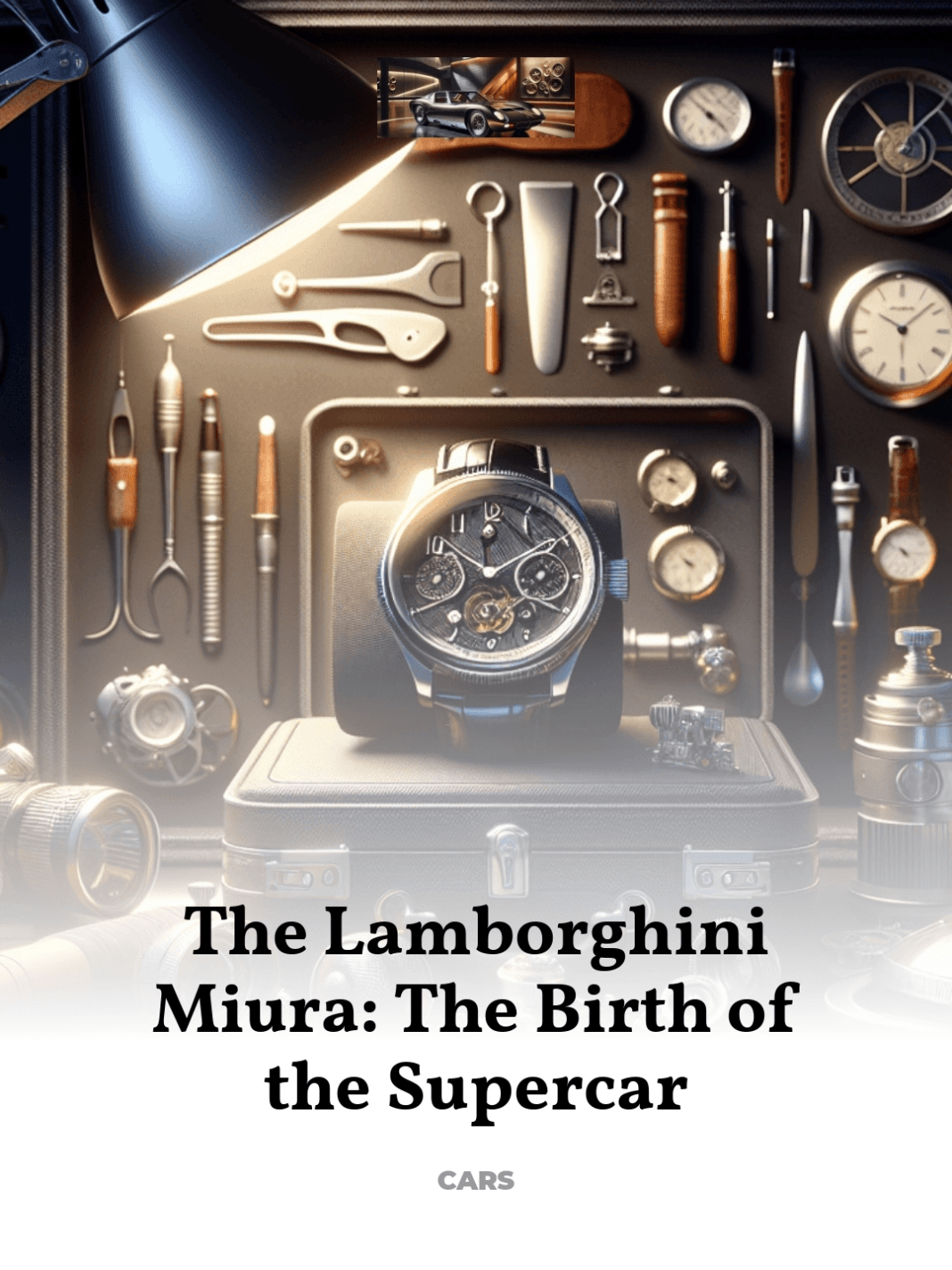How This Revolutionary Model Changed Automotive History Forever
The Lamborghini Miura not only epitomized the glamour and performance of high-end sports cars but also marked the inception of the supercar era. Its introduction to the world reshaped automotive design and engineering, setting new benchmarks for luxury, speed, and aesthetics in the automotive industry.
- The Genesis of the Lamborghini Miura: A Visionary Concept
- Design and Technological Innovations
- Cultural Impact and Iconic Status
- How the Miura’s Legacy Continues to Influence Modern Supercars
- Concluding Reflections on the Miura’s Historical Significance
The Genesis of the Lamborghini Miura: A Visionary Concept
In the mid-1960s, Ferruccio Lamborghini, already known for his eponymous luxury tractor company, embarked on a mission to create a car that could outperform and outclass the contemporary offerings from Ferrari. The result was the Lamborghini Miura, introduced in 1966. It was a product of not just innovative engineering but also a bold vision that challenged the status quo of sports car design.
The idea for the Miura began as an unofficial project by Lamborghini’s engineering team, led by the talented Gian Paolo Dallara, with contributions from Paolo Stanzani and Bob Wallace. The team’s goal was to produce a car that combined technical prowess with dramatic styling. The Miura’s design was revolutionary, featuring a rear mid-engine, two-seat layout that was unheard of at the time for a road car.
- Chassis and Body: The Miura’s chassis was a lightweight steel frame with a centrally mounted engine, which enhanced balance and handling.
- Engine: It boasted a 3.9-liter V12 engine, which was transversely mounted – a novelty that contributed significantly to its compact design and exceptional performance.
- Performance: With a top speed of over 170 mph and an acceleration of 0 to 60 mph in under 7 seconds, the Miura set new standards for sports car performance.
Design and Technological Innovations
The Lamborghini Miura’s design was a radical departure from contemporary sports cars, characterized by its sleek profile and compelling aesthetics. Marcello Gandini of Bertone, who was only in his late twenties at the time, designed the Miura. His work resulted in a car that was both aggressive and elegant, capturing the essence of speed and luxury.
The Miura’s “eyelashes” around the headlights, its low-slung silhouette, and its distinctive air intakes were design elements that not only served aesthetic purposes but also functional ones, improving the car’s aerodynamics and cooling. Inside, the Miura was just as revolutionary, with a layout that prioritized driver experience, featuring a state-of-the-art instrument cluster and ergonomic controls.
- Innovative Materials: The use of lightweight materials such as aluminum for the body panels significantly reduced the car’s weight, enhancing its performance and handling.
- Aerodynamics: Gandini’s design emphasized aerodynamic efficiency, which was critical to achieving the Miura’s high speeds.
Cultural Impact and Iconic Status
The Lamborghini Miura quickly transcended the automotive world to become a cultural icon. It appeared in numerous films, advertisements, and television shows, most notably in the opening scene of the original “The Italian Job,” where it was featured in a breathtaking sequence in the Italian Alps.
The Miura became synonymous with the lifestyle of the rich and famous, owned by celebrities such as Frank Sinatra, who famously said, “You buy a Ferrari when you want to be somebody. You buy a Lamborghini when you are somebody.” Its appeal was rooted not just in its performance but in its embodiment of 1960s and 70s glamour and excess.
- Symbol of Status: The Miura was more than a car; it was a status symbol, representing the pinnacle of luxury and performance.
- Influence on Pop Culture: Its influence extended beyond automotive circles, impacting fashion, design, and popular media.
How the Miura’s Legacy Continues to Influence Modern Supercars
The Lamborghini Miura’s influence is evident in the design and engineering principles of modern supercars. It set a precedent for performance capabilities and aesthetic standards that continues to inspire automotive designers and engineers today.
Modern supercars like the Lamborghini Aventador or the Ferrari LaFerrari build on the concepts introduced by the Miura, particularly in terms of engine placement, aerodynamics, and material use. The supercar industry continues to evolve, but the foundational innovations introduced by the Miura remain at its core.
- Technological Advancements: Today’s supercars incorporate advanced materials and technologies, but the basic principles of performance, balance, and design excellence remain guided by the standards set by the Miura.
- Continued Inspiration: The Miura remains a touchstone for both design and engineering in the automotive world, inspiring new generations of cars that captivate and excite.
Concluding Reflections on the Miura’s Historical Significance
The Lamborghini Miura was more than just a fast car; it was a masterpiece that blended art, technology, and performance in a way that had never been seen before. Its introduction marked the beginning of the supercar era, influencing the direction of automotive design and engineering for decades.
As we reflect on the Miura’s legacy, it is clear that its impact extends beyond its technical achievements. It represents a moment in time when creativity, innovation, and daring combined to create something truly extraordinary. The Miura is not just a part of automotive history; it is a permanent fixture in the pantheon of cultural icons.
For further exploration of the Lamborghini Miura’s impact and legacy, consider visiting authoritative sources such as the Lamborghini Official Archive.



